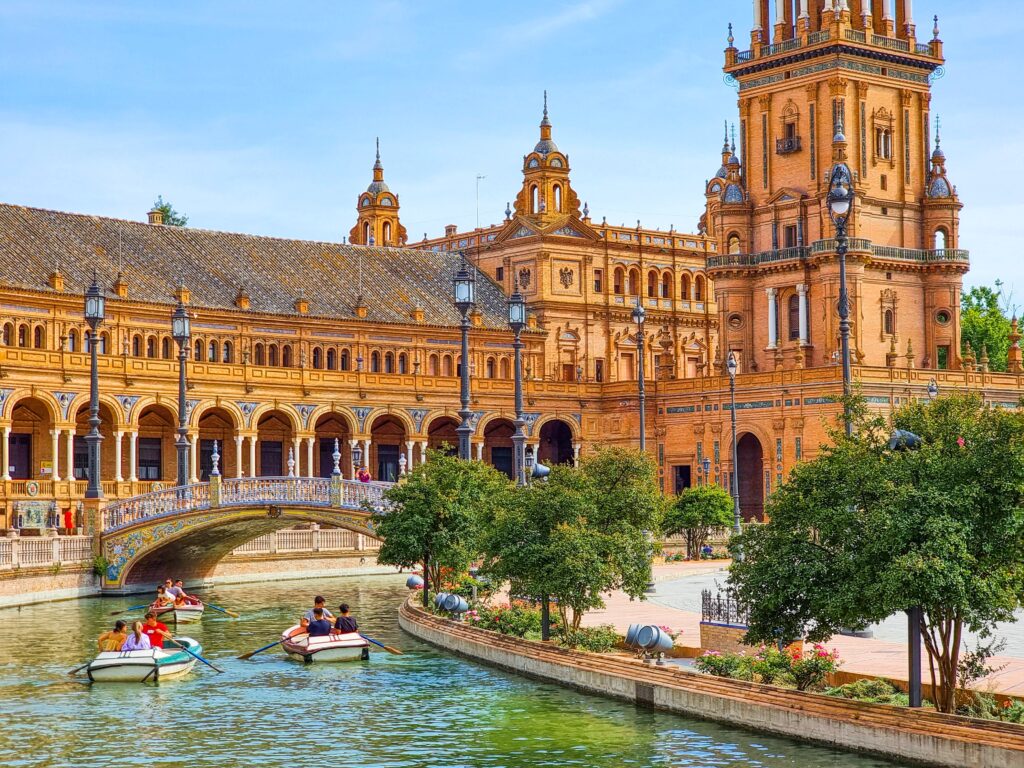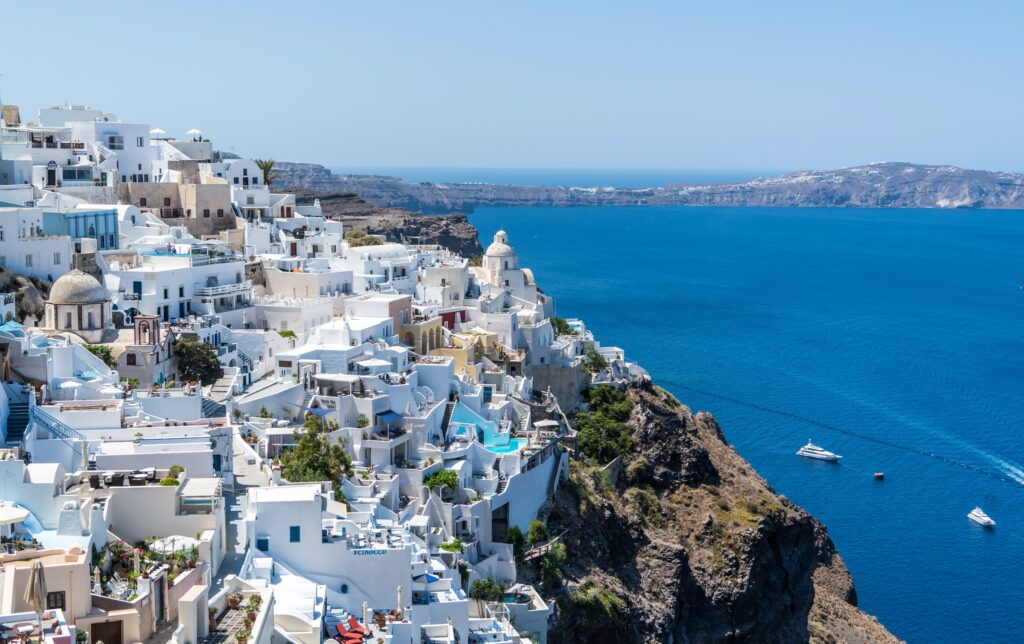The Best of Seville Spain in 1-3 Days
The Best of Seville Spain in 1-3 days Seville, located in the sunny region of Andalusia, Spain, is a city rich in culture and history with Moorish and Christian influences. The city saw a transformation in its culture, economy, architecture, crafts, and religious tolerance. The Moors (Arabs) conquered Seville from the early 8th until the 13th century. The city experienced significant transformation in its culture, economy, architecture, and religious tolerance. You will find tilework, carved stucco, and well-manicured gardens throughout the city. Flamenco is part of the cultural life in Seville. The dance originated in Andalusia with moves carried by the Arabs. Tapas are said to be the best in Spain. Many local bars and restaurants offer free tapas, and small plates of Spanish delicacies, with each ordered drink. Walking through the picturesque narrow streets, enjoying bar hopping and sampling tapas, or getting lost in the alleys of the Jewish quarter make Seville an extraordinary place. Best time to visit: March to April and September to November. Hotel prices are lower; temperatures are mild. Easter is the Holy Week when religious parades take place throughout the city. I visited in April; it was very comfortable. Where to stay: Click here for information. Helpful tips: Using eSim card will give you coverage worldwide with one provider and one payment. Click here for info. Where to eat: Restaurants with ratings and reviews. Click TripAdvisor. Travel Insurance: Click here for information. Why I need Travel Insurance. From the Airport: Seville Airport is 10 kilometers from the city, off the A-4 motorway. You can get on the EA line from the airport to the city center by bus. The trip takes about 35 minutes and costs 4 euros (6 euros return) . The journey takes about 30 minutes by taxi and has a fixed price of €24.98. By road, you must take the A-4 on a 25-minute trip. Getting around on a bus: Seville’s city buses usually run from 6 a.m. to 11.30 p.m. There is a one or 3-day tourist card with unlimited travel—best times to visit: March to May. 1 Day plan: Basilica de la Macarena Metropol Parasol Casa de Pilatos Barrio de Santa Cruz Alcazar Cathedral de Sevilla & Giralda Tower 2 Day plan: (add) Muse de Bellas Artes de Sevilla Iglesia Colegial del Salvador Archivo de Indias Real Plaza de Toros Plaza de España Parque Maria Luisa Cathedral de Sevilla & Giralda Towe All the sites are withing walking distances. Seniors; you can find helpful information by clicking: Traveling Seniors. 3 DAYS VISIT DAY 1 1. Basilica de la Macarena, also known as Basílica de Nuestra Señora de la Esperanza Macarena, Houses the famous statue of the Virgin Mary known as “La Macarena.” The facade has delicately carved figures representing the lives of Jesus and the Virgin Mary. The center of the church is decorated with marble columns. It has beautiful glass-stained windows. The altars are well decorated. The Mary statue was created from wood in the 17th century. The statue is so well done that it is life-like. It is dressed in embroidered garments and adorned with jewels. Click here for tours and activities. 2. Metropol Parasol, also known as Las Setas de Sevilla or the Mushrooms of Seville A modern designed structure built from Birch wood and designed by the German architect Jurgen Mayer. It is a futuristic design contrasting the medieval architecture of Seville. There is a terrace on the rooftop; an elevator takes visitors to the top, where they can enjoy the Seville vistas. They can also enjoy the bar and restaurant on top, below a public square where events and activities take place. Click here for tours and activities. 3. Casa de Pilatos, also known as the Pilate’s House Was built in the 15th century by the Enríquez family, a Spanish noble family. It depicts beautiful Andalusian architecture. Rich in its design and decoration. A legend claims the house was built on the spot where Pontius Pilate was born hence the name. Pilate presided over the trial of Jesus. The magnificent courtyard is adorned by ornate arches and beautiful azulejo tilework representing scenes from the bible. The interior was decorated with detailed plasterwork and handcrafted woodwork. The rooms bear witness to the extravagance of the owners with paintings, tapestries, and sculptures. Click here for tours and activities. 4. Barrio de Santa Cruz, also known as the Santa Cruz neighborhood, Whitewashed houses, winding narrow streets, and a vibrant atmosphere that makes the area attractive to locals and visitors. Its history goes back to the Arab medieval times. The Jewish quarter was busy with merchants, artisans, and scholars until the Catholic monarchs expelled the population during the Spanish Inquisition, and the area fell to neglect. It was renewed in the 18th and 19th centuries to what we see today, as a vibrant and desired place. The Moorish influence is throughout the neighborhood, which gives it a unique charm. Gardens, plazas, and parks are in the area. Cafes, restaurants, and bars are where people gather to socialize. Click here for tours and activities. 5. Alcázar of Seville Alcazar was built by the Muslims in the 10th century as a fort and defensive structure. The renovations over the years present a mixture of Moorish, Gothic, Renaissance, and Mudejar architectural styles. Like other structures in Seville, there are tilework and detailed decorations. The designs are called azulejos which is Andalusian art. Gardens outside with fountains, pools, and geometrically planted and trimmed hedges provide a tranquil corner. In the Alcazar sits the Palacio de Don Pedro or the Mudejar Palace. Mudejar comes from the Arabic word Muhajir which means immigrant. These Muslims stayed after the Arabs were defeated and pushed back to North Africa. They became known for their artistic architecture, evident in the Palacio. Also in the Alcazar is The Sala de los Embajadores, or the Hall of Ambassadors, with very artistically crafted wooden ceilings. Click here for tours and activities. 6. The Cathedral of Seville and the Geralda Tower, also known as
The Best of Seville Spain in 1-3 Days Read More »





